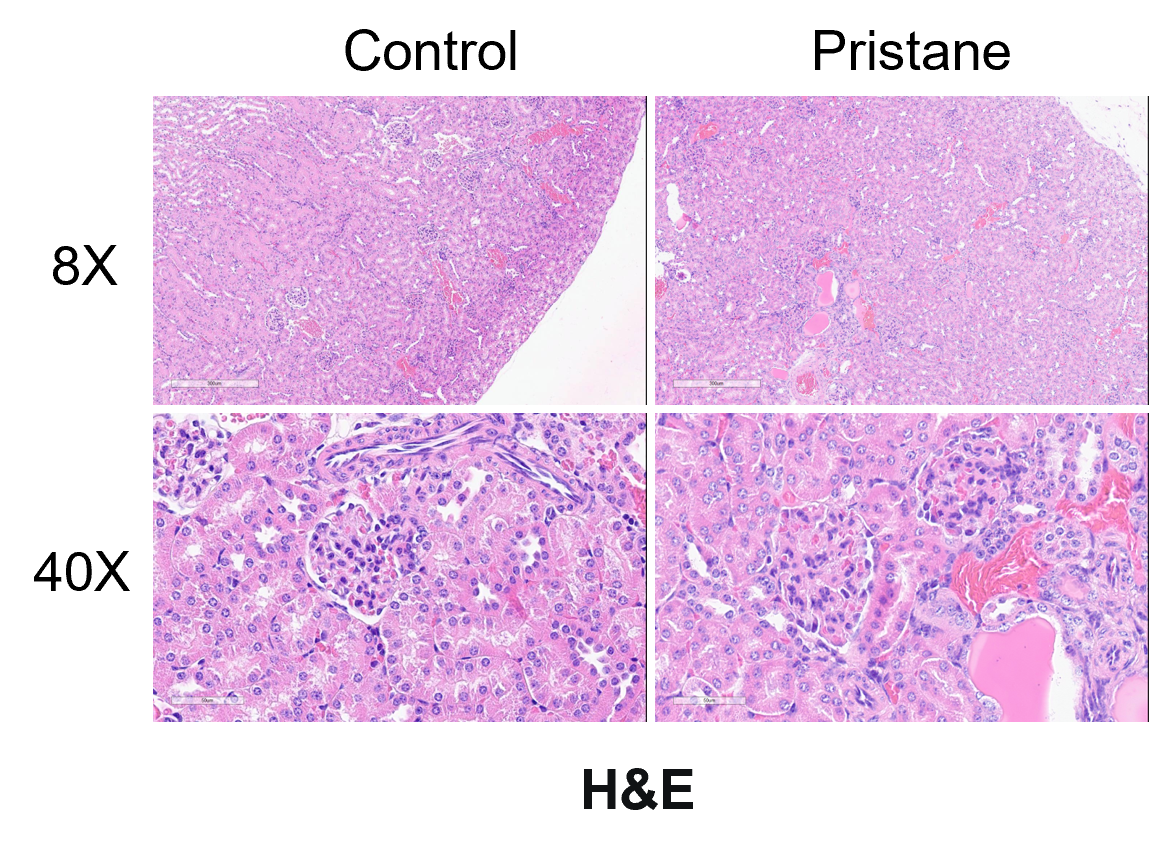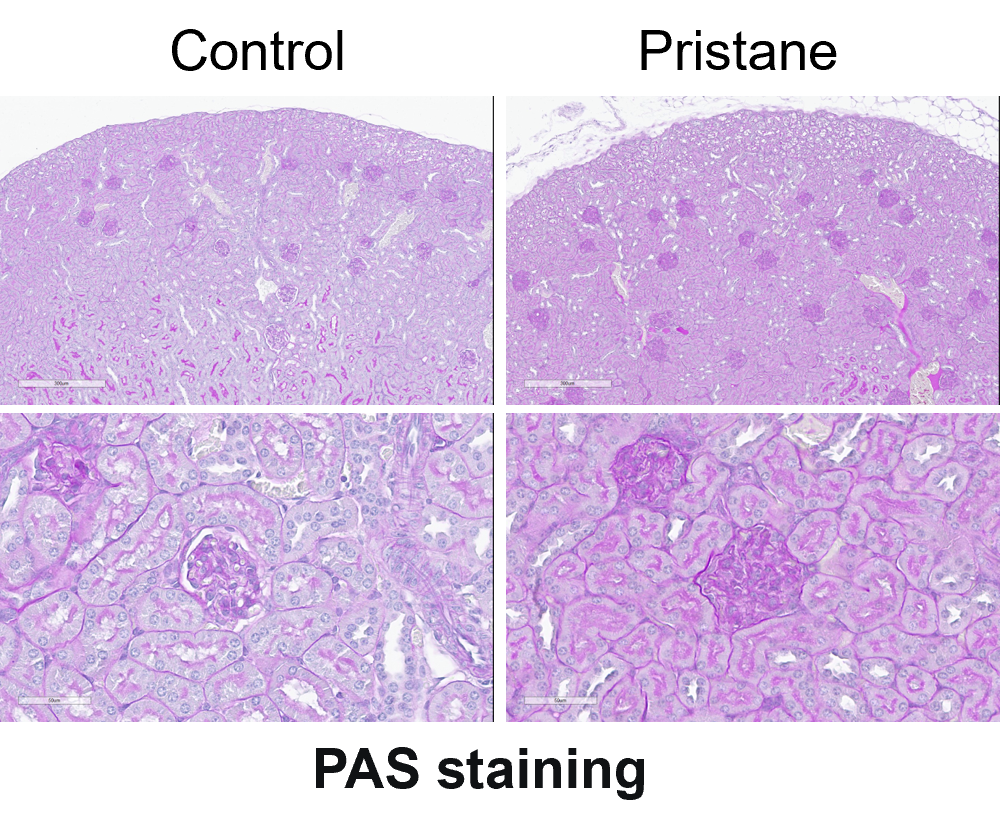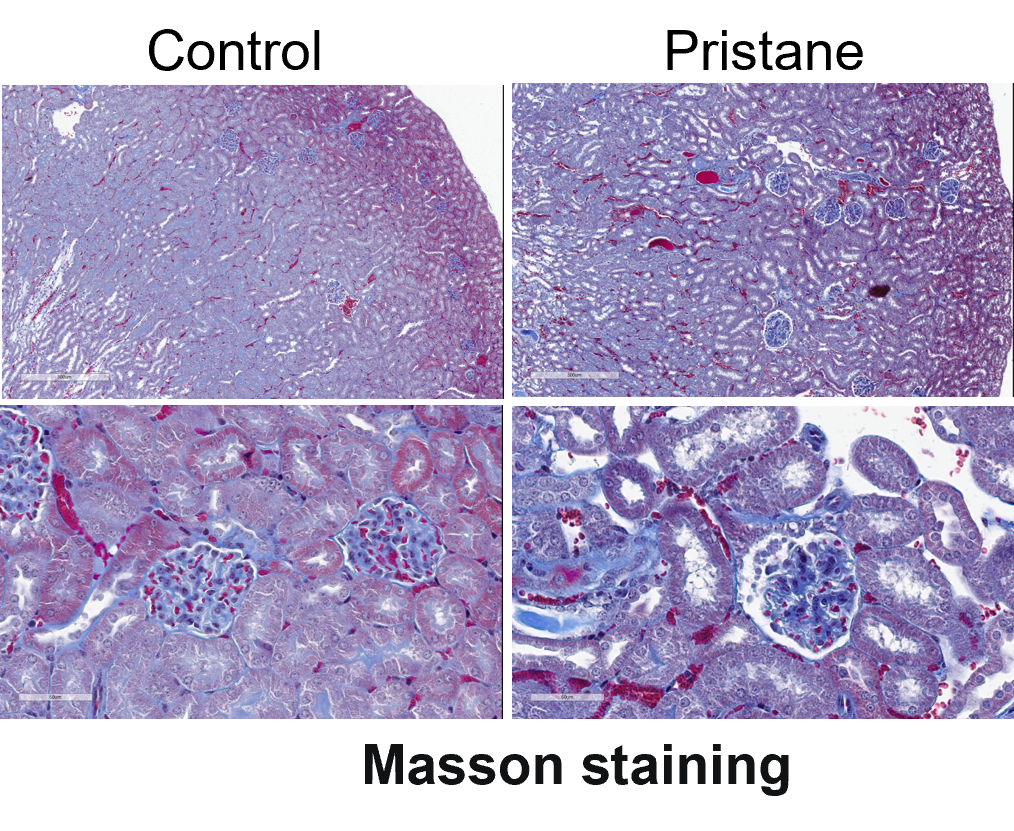Systemic Lupus Erythematosus (SLE), or lupus, is an autoimmune condition that triggers generation of autoantibodies, cytokines, and immune complexes that can cause tissue damage in several organs, including the kidney. Though there are many purported causes of SLE in the clinic, administration of the chemical pristane can induce SLE-like symptoms in animal models. Biocytogen’s pristine-induced SLE model exhibits hallmarks of the disease, including proteinuria and elevated anti-dsDNA IgG in the serum.
-
SLE Model Build
-


Experimental induction of SLE. SLE is modeled by administration of the chemical pristane, which is given as a single IP dose to Balb/c mice. After 8 months, proteinuria in urine and mouse anti-dsDNA IgG in serum are found to be elevated after treatment, indicating that SLE-like disease is induced.



Histological analysis of the kidneys of mice with induced SLE. H&E staining(A), PAS staining(B) and Masson staining(C) indicate glomerular stromal cell hyperplasia, glomerulosclerosis (B), and glomerular fibrosis (C) in the pristane-treated group.



